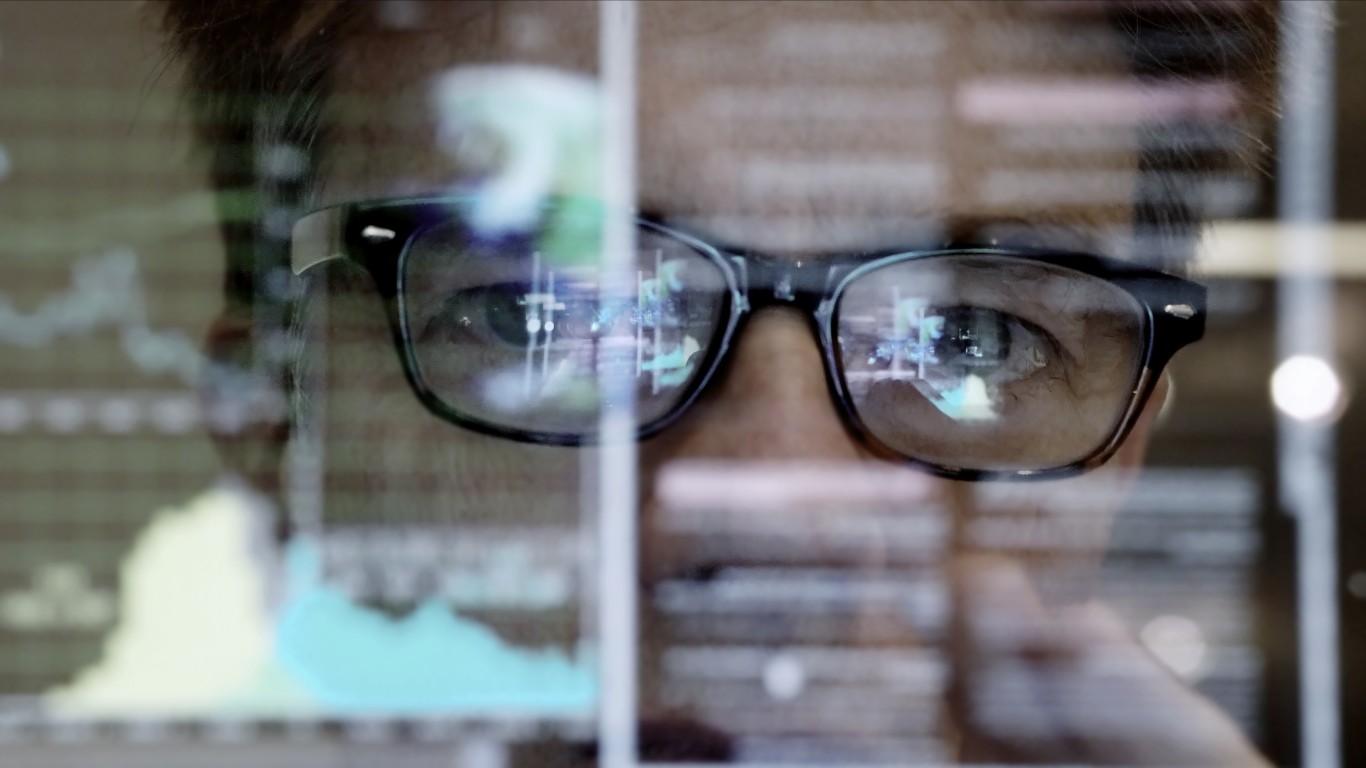Economy
Does Inverted Yield Curve Signal a Fed Rate Cut, or Are Recession Odds Rising Again?

Published:

Just like that, the major run in stocks that was continuing from 2019 has gone into the red. A 500-point drop in the Dow Jones industrial average put the index back at a negative return of less than 1% year to date, even if the S&P 500 is still up less than 1% for the same period. The coronavirus scare is growing, with China’s economy now certain to take a serious hit to gross domestic product. A weaker reading on Chicago purchasing managers index (PMI) was not offset by a higher consumer sentiment reading, possibly because much of the coronavirus fallout has not been factored in yet.
Now, the question comes down to what’s happening with interest rates. The stock market and many economists go into hunker-down mode when the Treasury yield curve inverts. 24/7 Wall St. outlined the inverted yield curve earlier in the week, but it tried to remedy itself up until this point. The inverted yield curve is a scare because of the implications of what happens when longer-term interest rates go lower than short-term ones. It can be one tool that is used to predict a recession.
Before getting bogged down by recession fears, note that an inverted yield curve also can simply be a placeholder that is used to forecast that the Federal Reserve is behind the curve and will have to lower interest rates sooner rather than later.
With the federal funds range currently at the 1.50% to 1.75%, the Treasury yields are as follows: 1.33% for the three-month bills, 1.53% for six months, 1.44% for 12 months, 1.35% for two years and 1.34% for five years. When you get out to the 10-year note and 30-year bond, those rates are just 1.53% and 2.01%, respectively, with both down almost 40 basis points each in the last month alone.
Most companies this earnings season have done what they could to address the risks and exposure they have to Wuhan and mainland China. Many companies have shut stores, and many factories have been closed down as well. Many companies in China have extended their times closed to workers out into mid-February, at the same that travel restrictions and bans are starting to take place.
What hurts about the current inversion of the yield curve is that the argument could be made that perhaps the “wrong part of the curve was inverted.” Now it is the two-year versus 3/6/12-months. While the 10-year Treasury note has not inverted against the two-year note (1.53% vs. 1.35%), it is inverted against the three-month note, and it is at the very lowest part of the current fed funds range of 1.50% to 1.75%.
It was really not more than two weeks ago that there was an expectation that no rate changes was being priced in for all of 2020, or almost all of 2020. Now the CME FedWatch Tool suggests that there is just a 33.9% chance that the current range will be static at the July 29, 2020, Federal Open Market Committee (FOMC) meeting, with a 42.4% probability of 1.25% to 1.50% funds range and a 19.5% probability that funds will be in a 1.00% to 1.25% range. In short, the market is now discounting that there will be an interest rate cut by odds of roughly 62 to 34.
For the September 16 FOMC meeting, the CME FedWatch Tool has only a 23.1% probability that rates will be the same as now, with a 39.8% probability of 1.25% to 1.50% and a 26.8% probability of a 1.00% to 1.25% range. That’s roughly 68 to 23 odds against fed funds being the same.
One issue making things worse for the stock market is that the market itself had become very overbought in January. Until the coronavirus started spreading in the reported number of cases and countries, the major run in the final quarter of 2019 was continuing almost with any pause. It’s easy to say that the effects and fears of the coronavirus are magnifying the stock market selling pressure on the last day of January. The problem of saying that is no one in their right mind would expect the number of cases and the number of deaths to get better suddenly. After all, there are no cures, and the virus is now more communicable than had been first reported.
Many investors had said they were just waiting for a better entry point to get into some of the market’s hot stocks. When it’s a potential pandemic worry, and a slower economy worry, they probably will fail yet again to stick to their plans to buy into the market.
How long will it take for the media to begin touting that the next recession is imminent, just like they very wrongly did last summer? The media’s insistent calls for a recession will be right one day, of course, and this is an election year, but right now it would be safer to assume that a rate cut will have to come sooner rather than later.
Now we just have to see how bad things get in China and other nations trying to contain the spread and fallout of the coronavirus and the economic impact associated with workers being out, stores being closed and consumers not going out to spend any money.
Thank you for reading! Have some feedback for us?
Contact the 24/7 Wall St. editorial team.